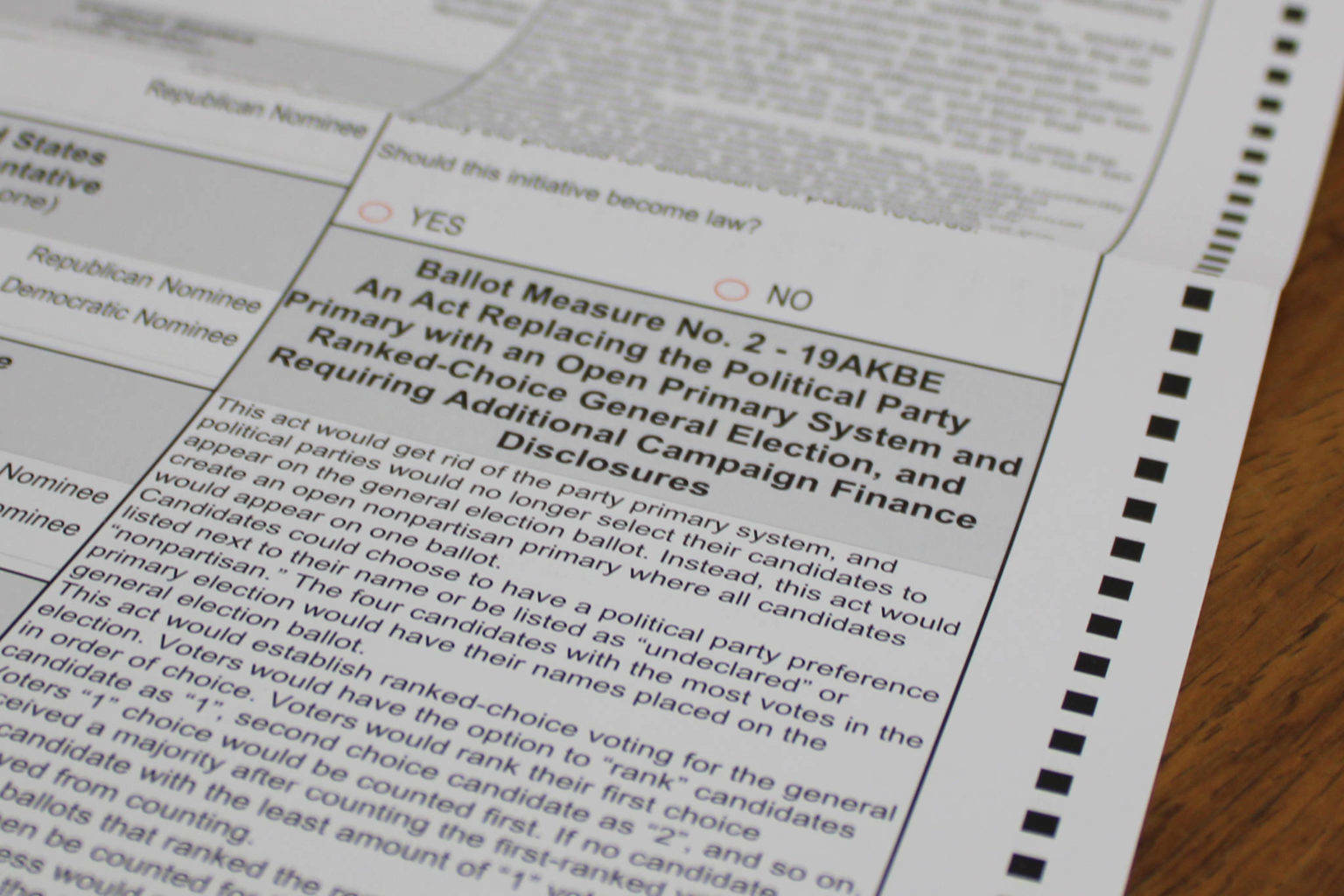Most Americans just want elections where it’s easy to vote, hard to cheat and easy to trust the results. Alaska has experimented with ranked-choice voting (RCV) and a citizens’ initiative now proposes to repeal it. That would be the smart choice to protect Alaska elections.
RCV makes the process more complicated, both for voters and for those who run elections. An example of an actual failed election shows how the problems with RCV can come together to create a perfect storm.
California allows local governments to use RCV for local elections. Alameda County, home to the city of Oakland, used RCV in its elections last November. At first, everything appeared to have gone just fine. The county certified vote totals and winners in all of their local elections. Weeks later, as county staff prepared for Christmas break, they got a phone call that upended everything.
Independent researchers had audited the county’s election and found a mistake. Actually, they found a series of mistakes that threw off results in multiple races. Because RCV makes elections more dependent on technology, much of the process happens inside a “black box.” This lack of transparency meant that no one at the county ever noticed the error. Neither did anyone at any of the campaigns. If not for the audit, nobody ever would have discovered what happened.
The trouble began with confused voters. Even RCV supporters admit their system requires expensive education campaigns to help voters figure it out. Alameda County had done that, but voters still made a variety of mistakes. What mattered in this case is that some voters did not rank anyone first but did rank one or more candidates. In other words, a voter might have left the first-place bubbles blank but filled in a vote for someone as a second or third choice.
This mistake is only possible in an RCV system, and there are different ways to interpret and count these ballots. Alameda County rules said that preference votes with gaps should be moved up before counting begins. In other words, if the first preference is blank but a second preference is filled in, it gets counted as if it was the voters first preference. But the computers, which are necessary to process and count RCV ballots efficiently, were programed to ignore the blanks.
This changed the vote totals in the county’s RCV elections, although most differences were small. Yet in an Oakland school board race, it changed the outcome.
There were three candidates: Mike Hutchinson, Pecolia Manigo and Nick Resnick. Under any rules, Resnick had a significant lead in the first round. One of the other candidates was going to be eliminated. With the machines applying the wrong rule and discarding 235 ballots, Hutchinson was 41 votes behind Manigo, and was eliminated. But when those 235 ballots were adjusted and counted the right way, Hutchinson led Manigo by 37 votes.
This completely flipped the race. Hutchinson went from being eliminated in the first RCV round to winning. This happened because many more of the ballots that lacked a first-preference vote had Hutchinson as their highest-ranked candidate rather than Manigo. But then Manigo’s voters, in their next-highest preference, supported Hutchinson over Resnick by about two-to-one.
RCV creates new ways for voters to make mistakes and new questions about how to count ballots. At the same time, it makes elections overreliant on technology, reducing transparency and accountability. The Oakland school board election was a relatively simple race, with just three candidates and two rounds of counting. Yet doing it efficiently meant relying on computers — not just to count ballots, but to adjust and eliminate them as well.
It was March of 2023 before the Oakland school board election mess was finally sorted out. A court ordered a “recertification of the results,” and the rightful winner took office four months after Election Day. (The candidate who was previously sworn in had already resigned after serving on the board for about a month.) The fact is that consequential mistakes like this can happen in any large RCV election, and, in many cases, they may never be detected.
Elections should be conducted so that voters can understand the process and trust the results. RCV fails this test. Even worse, it pushes elections into a technological black box where mistakes can go undetected. This led to a failed election in California just last year. Alaska voters should continue to push for a repeal of RCV.
• Trent England and Jason Snead are coauthors of the forthcoming book “The Case Against Ranked-Choice Voting,” from which this article is adapted.

